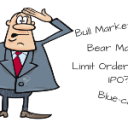Earlier this week, Ed published the final piece in his Strategy Map series. In this he explains the science behind Stockopedia’s QVM-based approach to investing and its track record of outperformance over the last decade or so.
As a follow up, I thought I’d share my own journey into systematic investing and discuss what I’ve learned about the real-world practicalities of managing a portfolio in this way.
Getting started
My own conversion to a systematic, portfolio-based approach to investing began in earnest in April 2016, when I launched the Stock in Focus (SIF) portfolio.
The SIF Folio is a model portfolio I’ve run on Stockopedia over the last seven years. The idea came about after a discussion with Ed about whether I could create a set of rules to select stocks that would outperform the market.
My goal was that in aggregate, the stocks in the portfolio would have the qualities needed to beat the market.
In other words, I wasn’t aiming to become a star stockpicker. I just wanted to engineer a portfolio that would grow more quickly than an index tracker. One key element of the approach was simply trying to avoid big mistakes or high levels of risk.
As Ed discusses, this approach often involves owning stocks you might not otherwise choose. I’ve certainly found myself buying shares I’ve felt indifferent about – or even disliked – on many occasions. But this hasn’t prevented them from (sometimes!) performing very well.
At a portfolio level, I think the SIF folio has been reasonably successful. While I haven’t delivered Warren Buffett-style returns, the value of the portfolio (excluding dividends) has risen by about 75% since its inception, giving an annualised return of 8% per year.
This compares with a gain of less than 20% for the FTSE All-Share index over the same period, or just 2.5% annualised.
SIF Folio: April 2016 - June 2023
Including dividends, SIF has doubled since inception, giving an annualised return of 10%.
The SIF performance results include estimated trading costs, but do not consider tax or broader account management fees.
My strategy involves relatively frequent trading, so an understanding of costs is especially important. This has been a concern to me at times, but on balance I believe…










